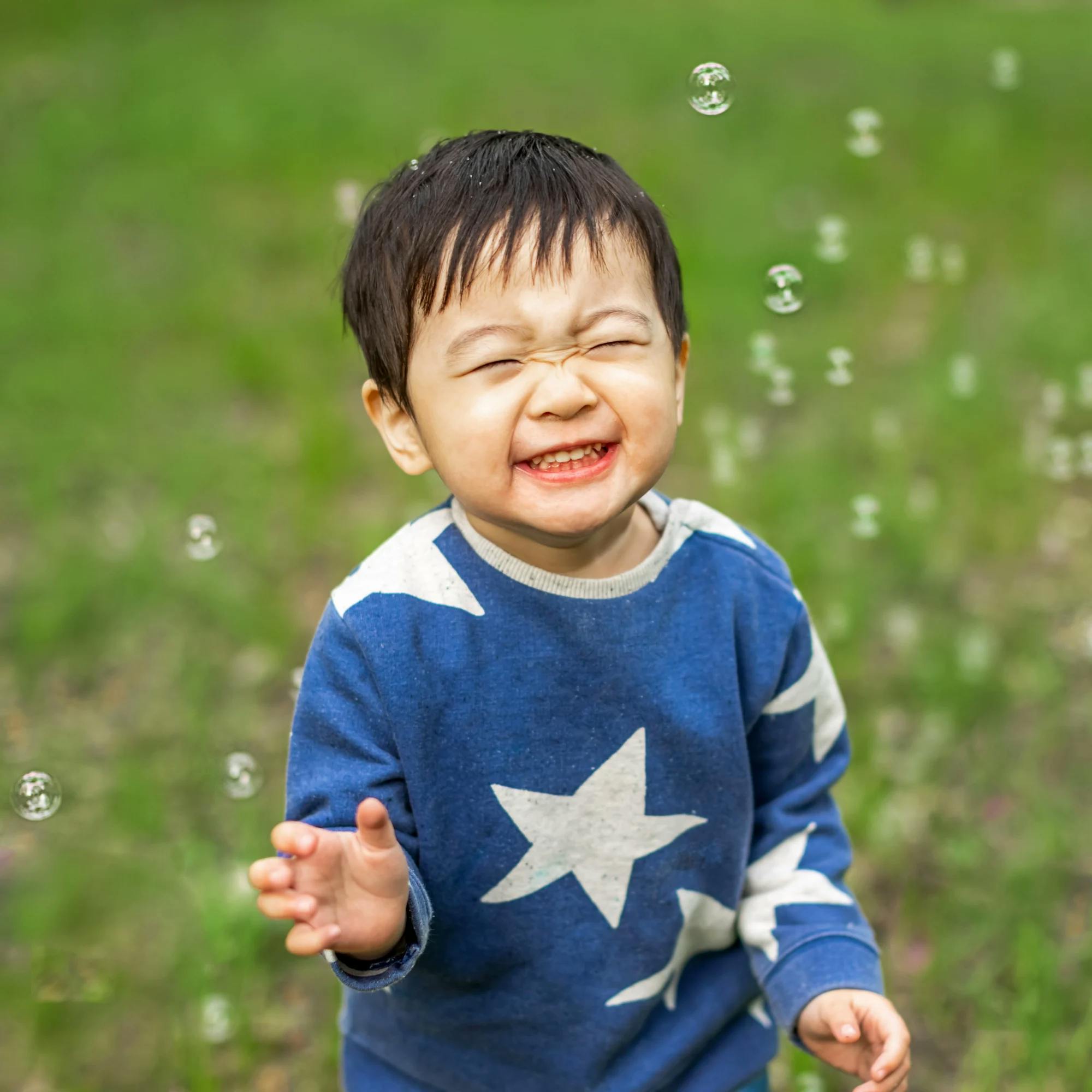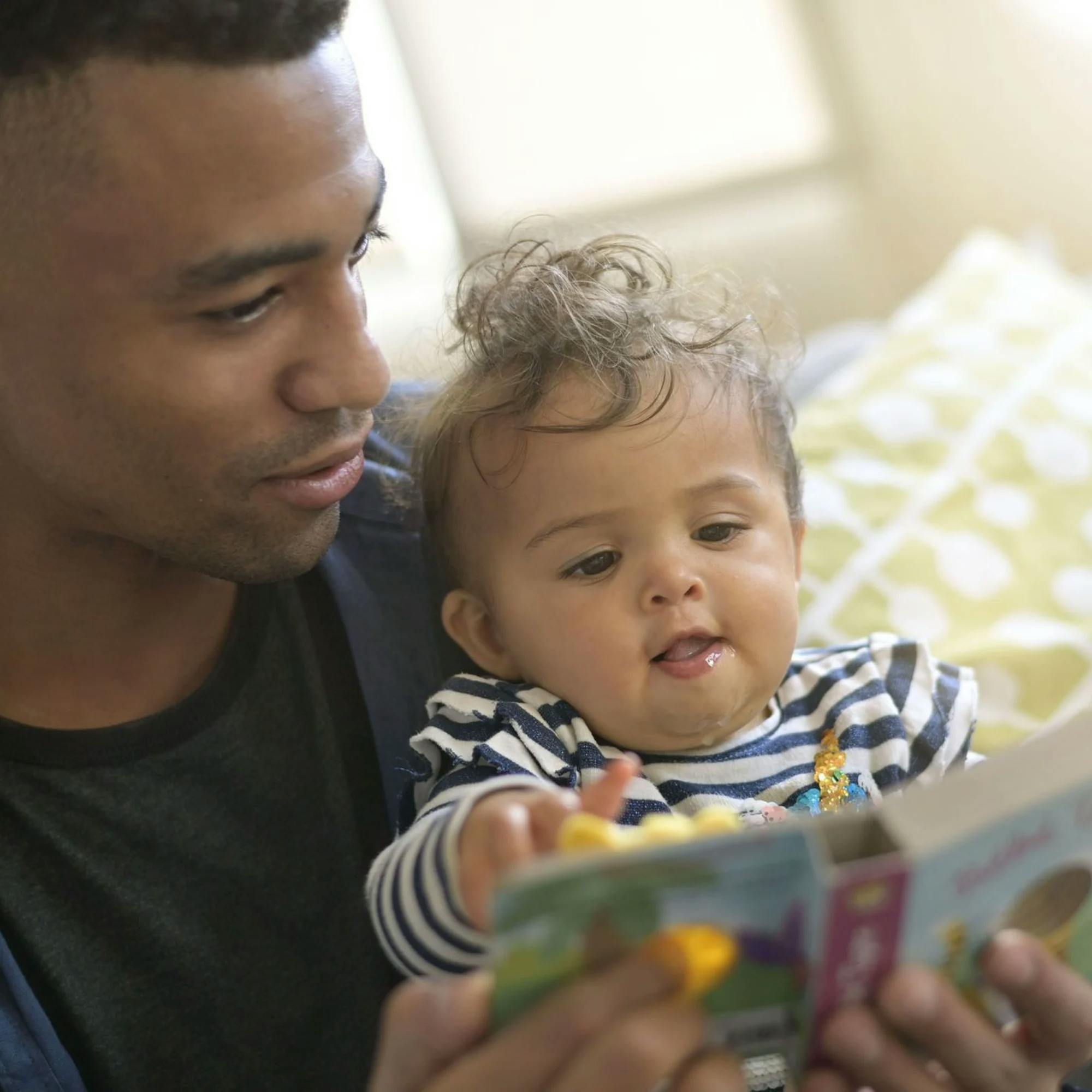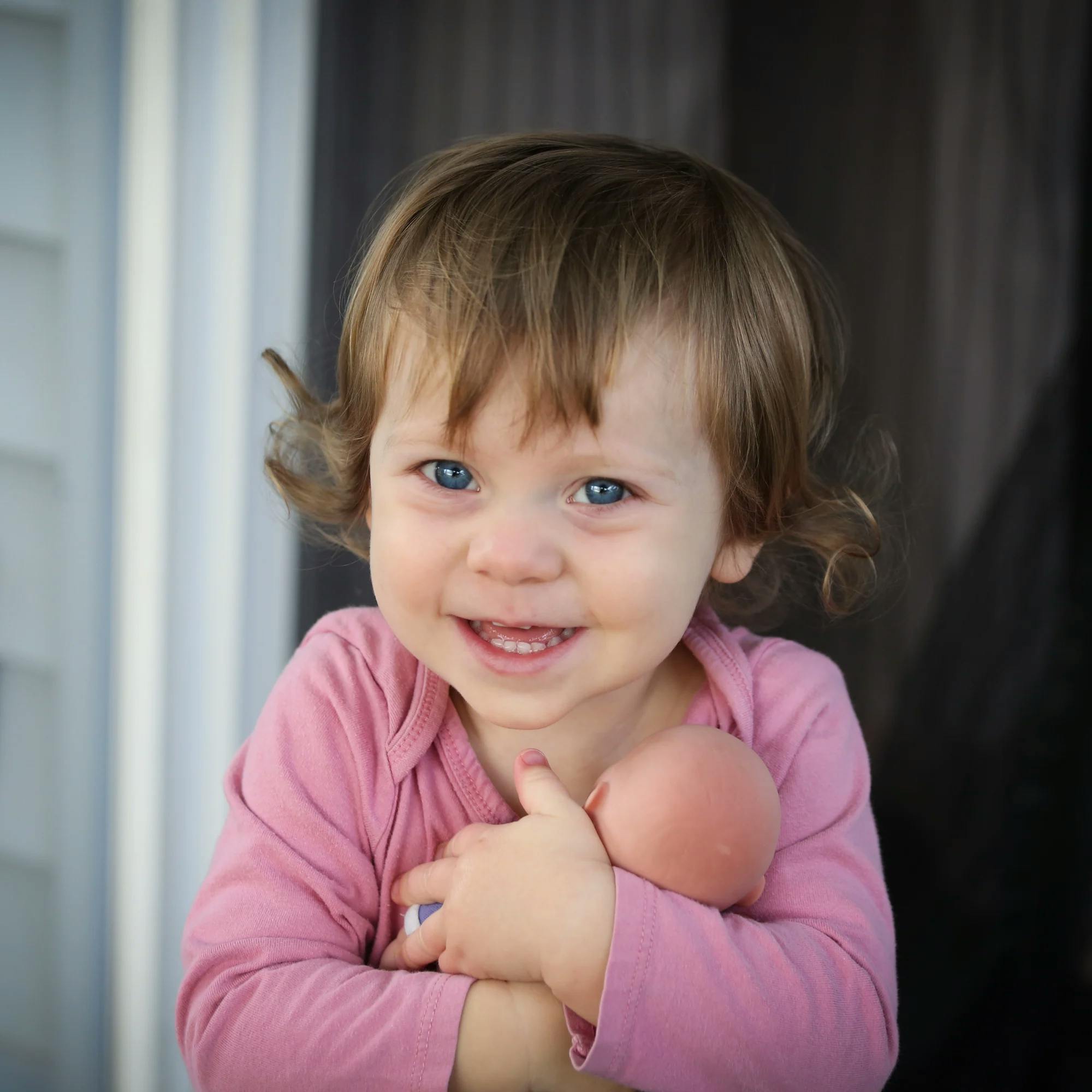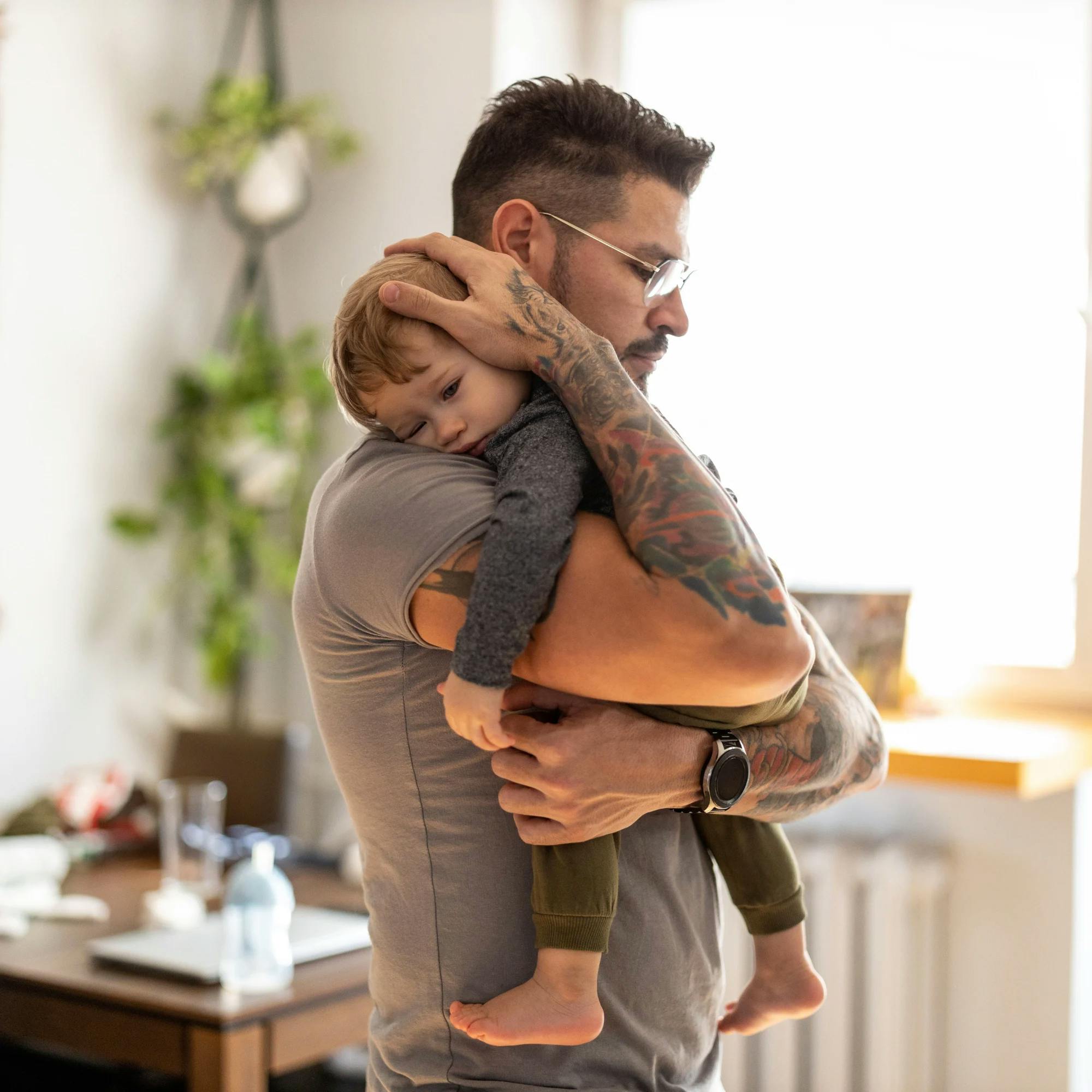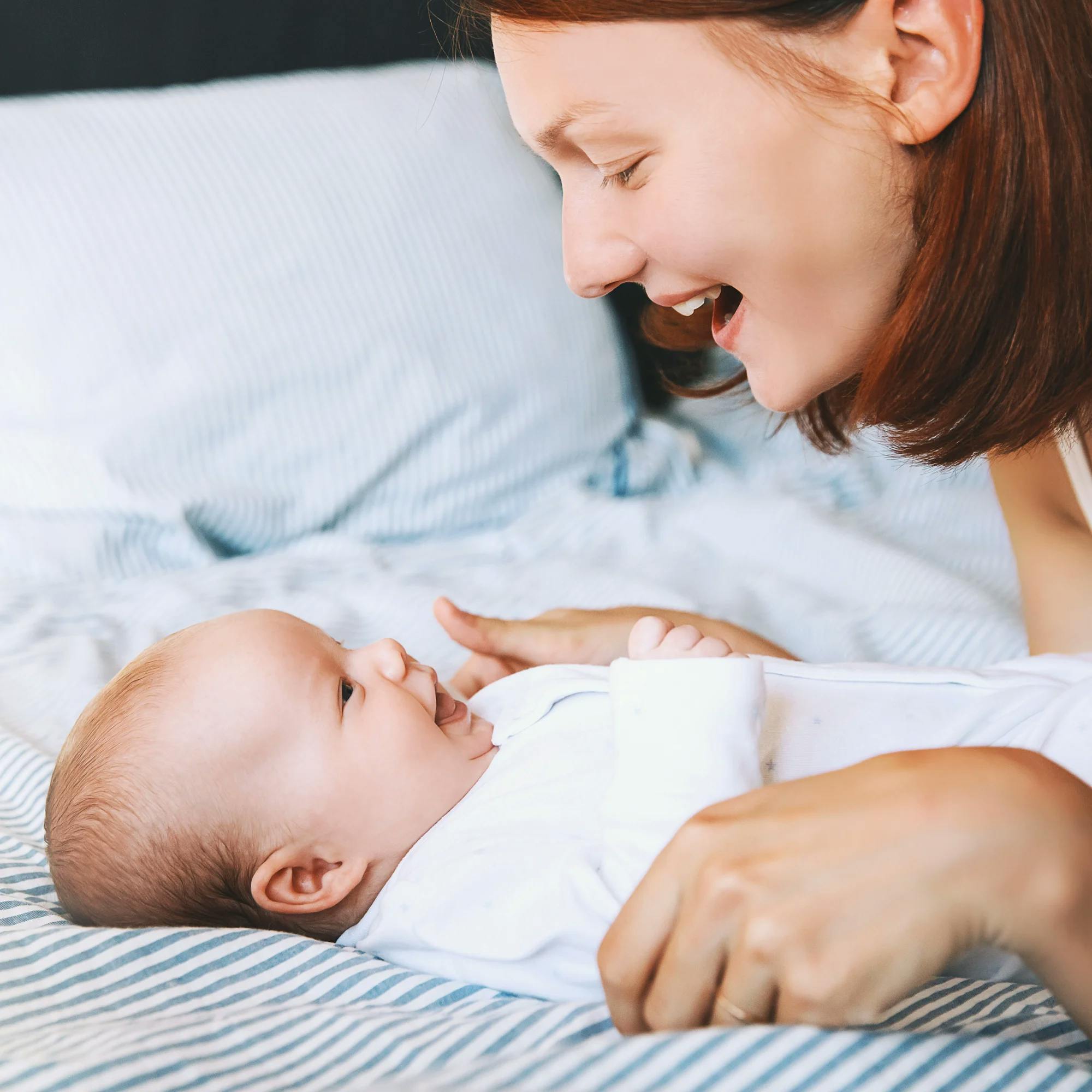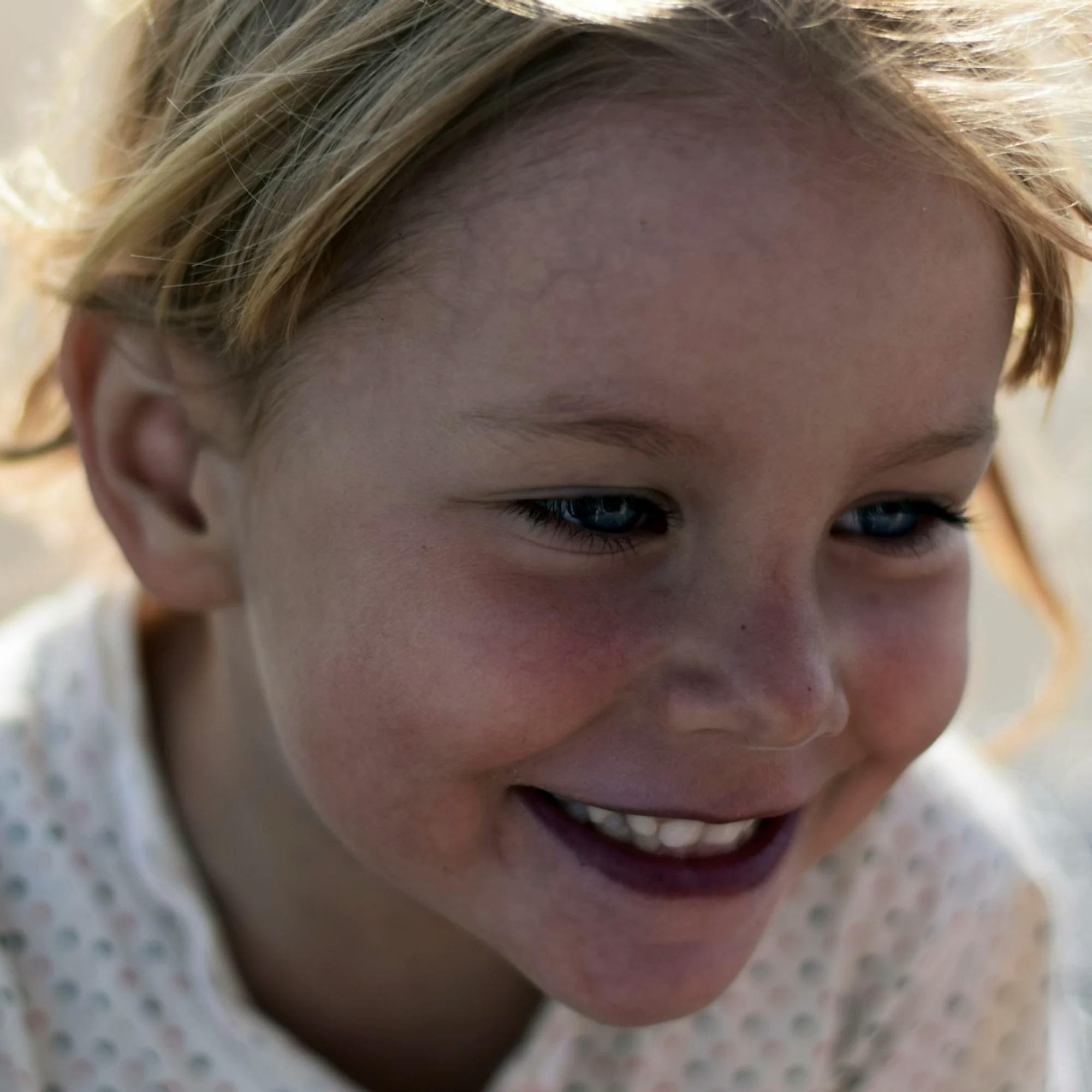If you have a 2-year-old, you may find yourself searching for new ways to keep them busy, entertained, and–most important–happy! The 2-year-old toddler stage is filled with fun and discovery, but it sure can keep you on your toes. Providing your child with fun ways to play promotes their growth, development, and creativity. Whether you’re looking for a gift for a 2-year-old or new ways to keep your toddler busy, this article is for you.
Read on to learn about some of the best toys for 2-year-olds, recommended by speech therapists. (Bonus: They include a few simple household items!) Plus, get expert tips on how to boost your toddler’s language skills and teach them to talk while you play!

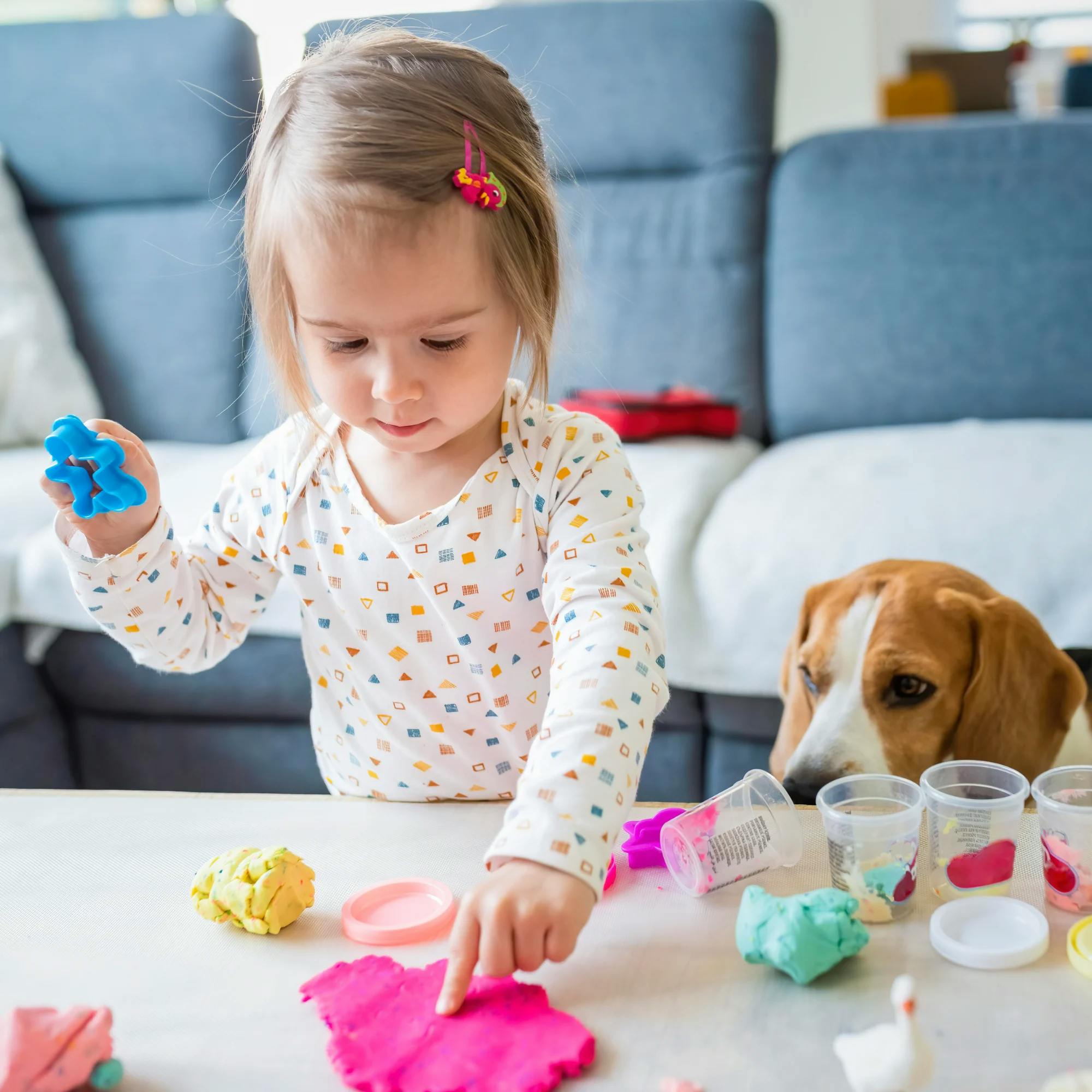
Why is play so important for 2-year-olds?
First, let’s talk a little bit about the benefits of play. Did you know that playing mimics communicating? Playing with others involves a back-and-forth exchange, just like a conversation. Think about it: Rolling a ball or a toy car back and forth requires two people to complete the task. The same is true for communication! One person talks, the other responds, and so on.
Play also helps children learn about cause and effect, which is another key part of communicating. Here are two examples of how toddlers learn about cause-and-effect relationships while they play:
Blocks can stack, but if you push them over they will fall.
If you push a toy train, it will drive on the track where you want it to go.
When a child begins to use new words to communicate, this is essentially a cause-and-effect relationship: the child says a word, then gets what they requested in return.
Joint attention is another aspect of play that’s related to communication. Joint attention is what happens when two people are focused on the same thing. Think about times you play and interact with your child. Do they ever give you a look or a smile as if to say, “Wow, did you see that?” That right there is joint attention. Purposeful engagement during play can't exist without joint attention. The same is true for purposeful communication.
Apart from all of this, playing and interacting with your child simply gives you more chances to communicate. When the two of you do a puzzle, play with dolls, build with blocks, or pretend to cook, you have natural, fun opportunities to use language and communicate with each other.

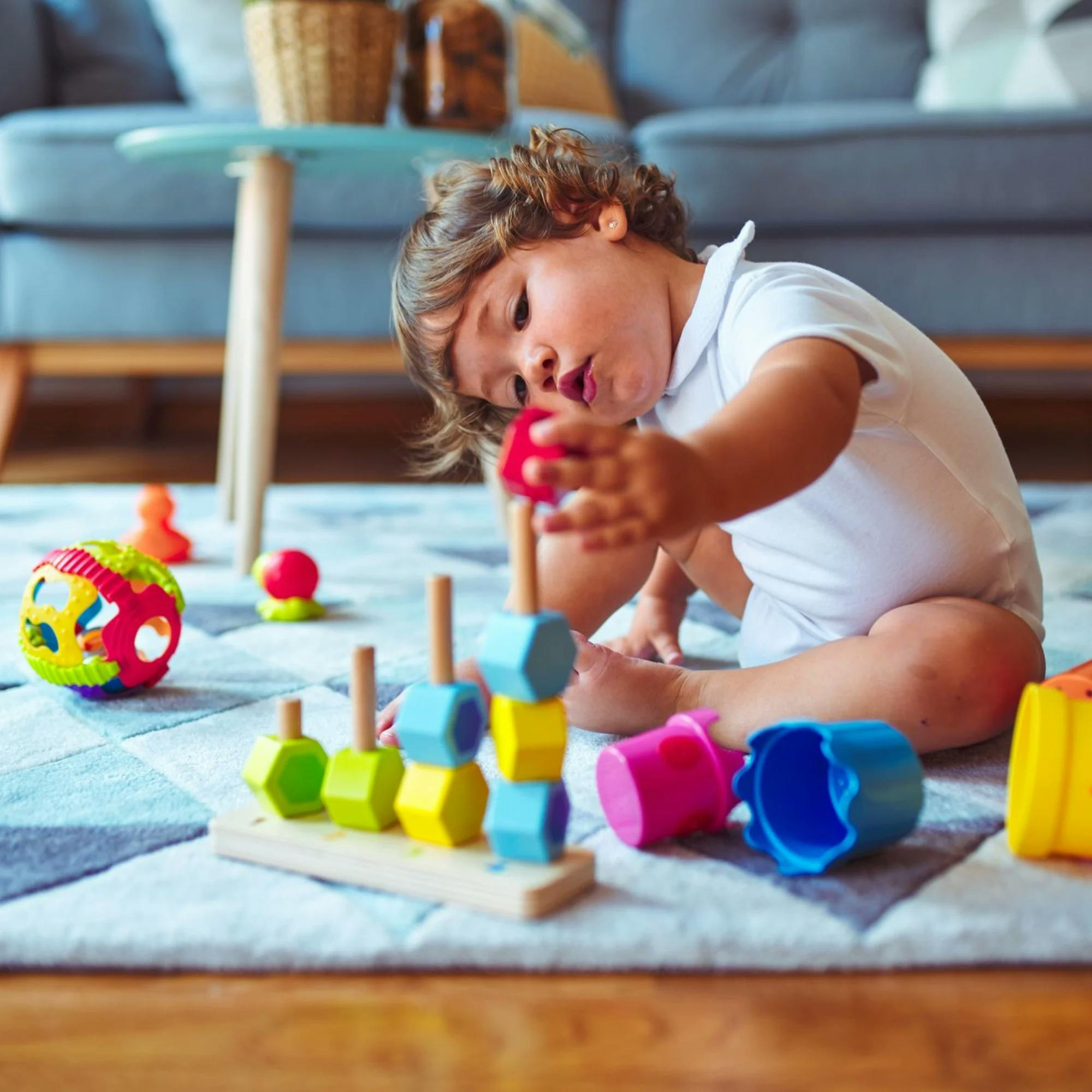
7 recommended toys for 2-year-olds
While you don’t have to have the newest or fanciest toys at home, some toys are better than others for entertaining your toddler–and promoting their speech and language. Let’s take a look at 7 of the best toys for 2-year-olds.
1 Puzzles
Puzzles are a perfect toy for toddlers. Not only do they hold a child’s interest, there are plenty of ways to use puzzles to work on speech and language development. Puzzles also promote fine motor skills, as your child picks up the pieces and fits them into their spot.
Find puzzles that have pictures of things your toddler enjoys–maybe animals, shapes, cars, or trains. As you play together, here are some ways you can use the puzzle to practice speech and language skills:
Label and practice saying the names of items in the pictures
Practice words like in and out
Hold the pieces and let your child practice asking for more. They could ask “More please?” or “Next piece?”
If the puzzle features animals or vehicles, practice the sounds they make–“Woof woof!” for a dog or “Beep beep!” for a car. Check out these two fun puzzles. They even make the sounds as you put the pieces in!

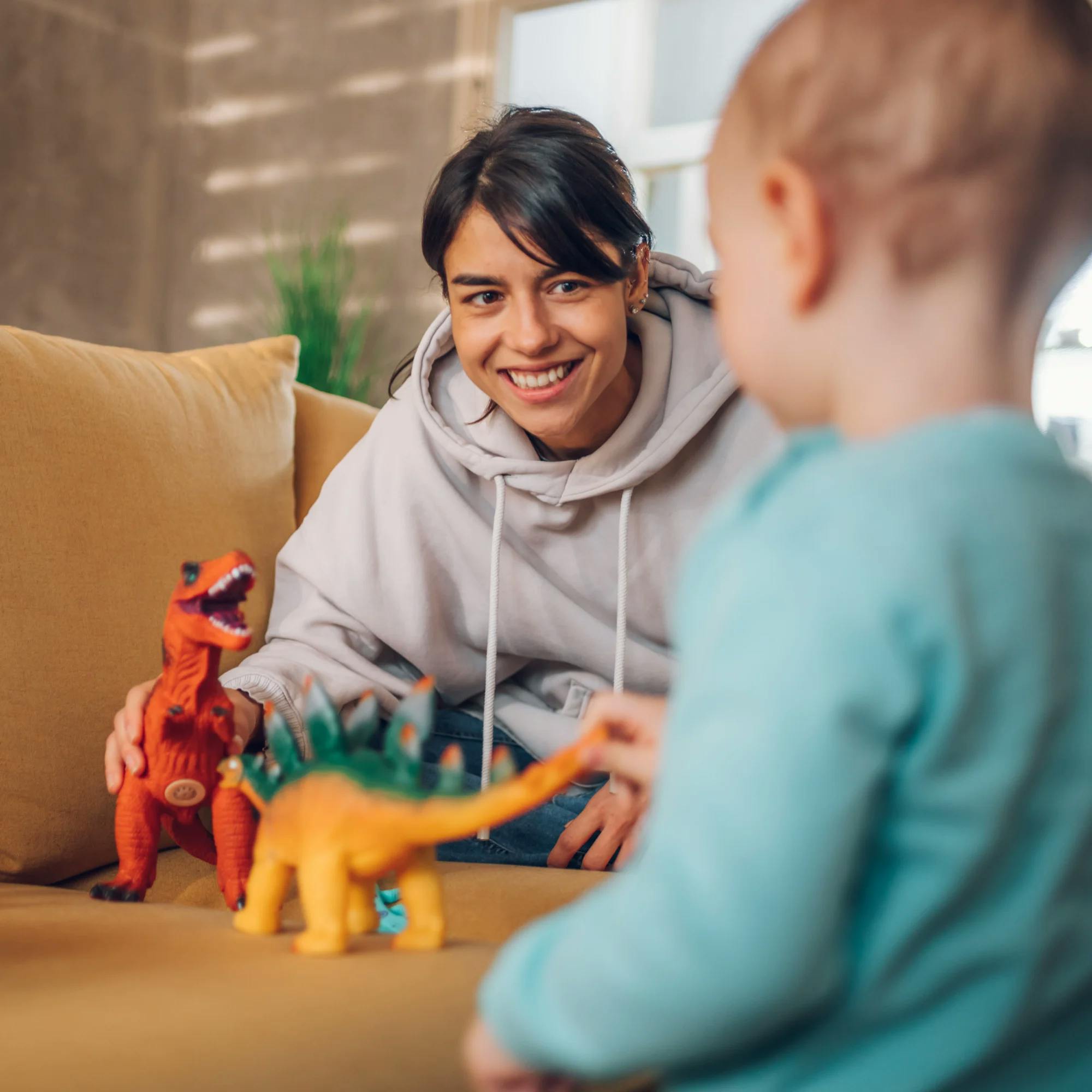
2 Drop & stack tower
This Drop & Stack Tower is a favorite among toddlers! The toy allows kids to practice stacking, as well as letting the ball fall and race down to the bottom. You can practice using phrases like, “Ready, set, go!” See if your child will complete the phrase when you say “Ready, set…”, or say the whole thing themself!
You can also work on spatial concepts such as placing the ball “up” at the top and then watching it roll “down” to the bottom.

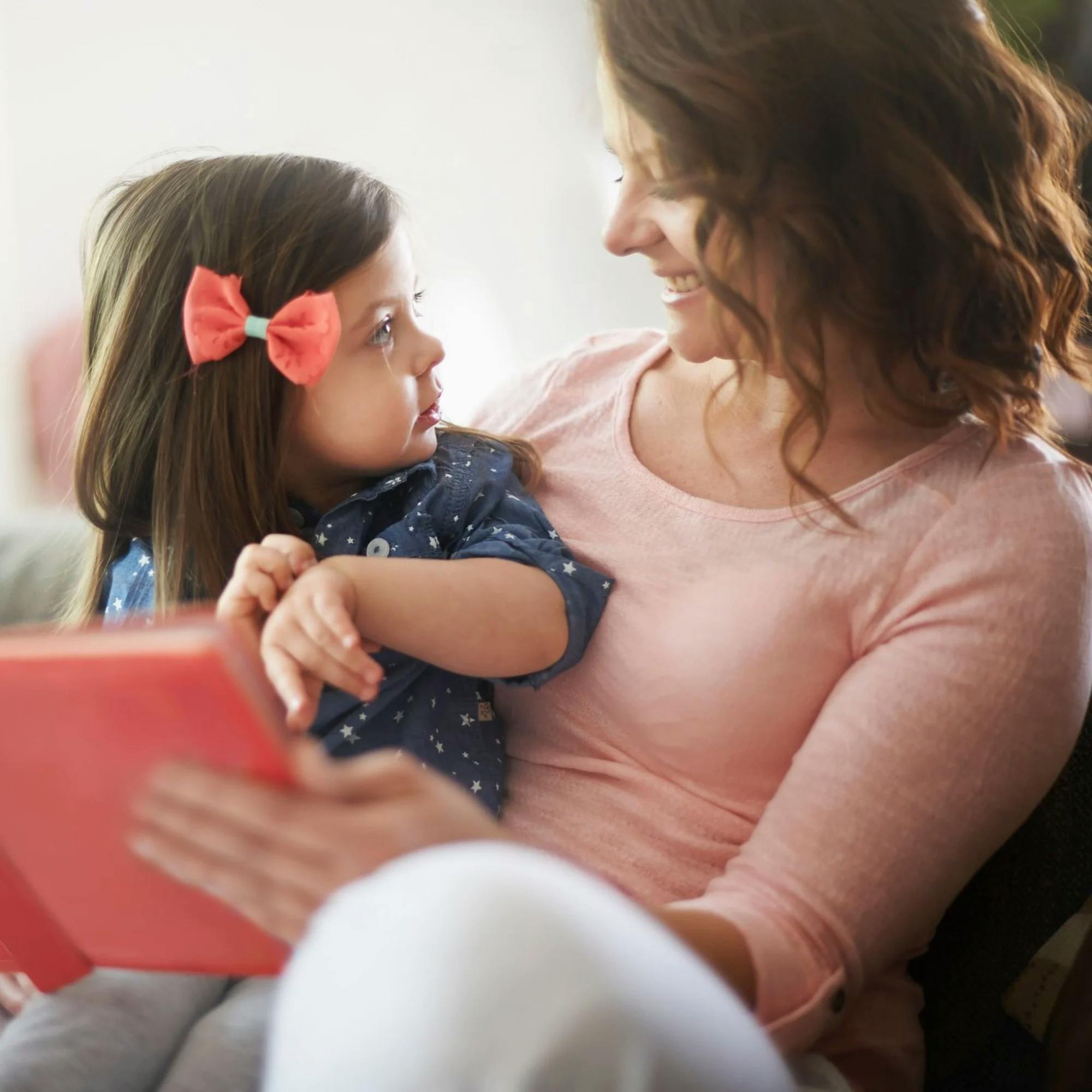
3 Toy vet kit
Take a look at this adorable vet clinic toy. Taking care of animals is a hit with many children, and this toy vet kit also offers the excitement of surprise. Kids love opening the doors to see what’s there. You can even hide other small toys instead of the animals.
Speech therapists love toys like this for several reasons. It’s a great way to work on labeling items, and you can also practice:
Pretend play, using the vet toys on the animals
Core words and concepts like in, out, open, and close
Color concepts, while matching the doors and the keys
4 Dress-up clothes
They may be overlooked sometimes, but some of the best toys out there are dress-up clothes. Kids can put on costumes to make-believe different scenarios: firefighter, doctor, princess, cowboy, astronaut, police officer, you name it!
Chances are you can find things around your house to make a costume. Maybe a clear plastic bowl for an astronaut’s helmet, some big boxes to become a robot, or cardboard cut into the shape of a knight’s sword. Find an old nightgown for a fancy dress, or even a towel for the perfect superhero cape. Get creative with it! As you and your child play together, practice different phrases and words related to what you’re pretending.
5 Bubbles
Here’s another classic toy for 2-year-olds: Bubbles. Who doesn’t love them? Take a look at this no-spill bubble container as an option. As you blow, together you can practice words like “pop” or “more!” And since it’s no-spill, when your toddler says, “Give me!,” you’ll feel more comfortable handing them over!
Another fun way to use bubbles is with bubble guns. Try chasing each other around outside while practicing fun two-word phrases, like “Got you!” or “You’re fast!”

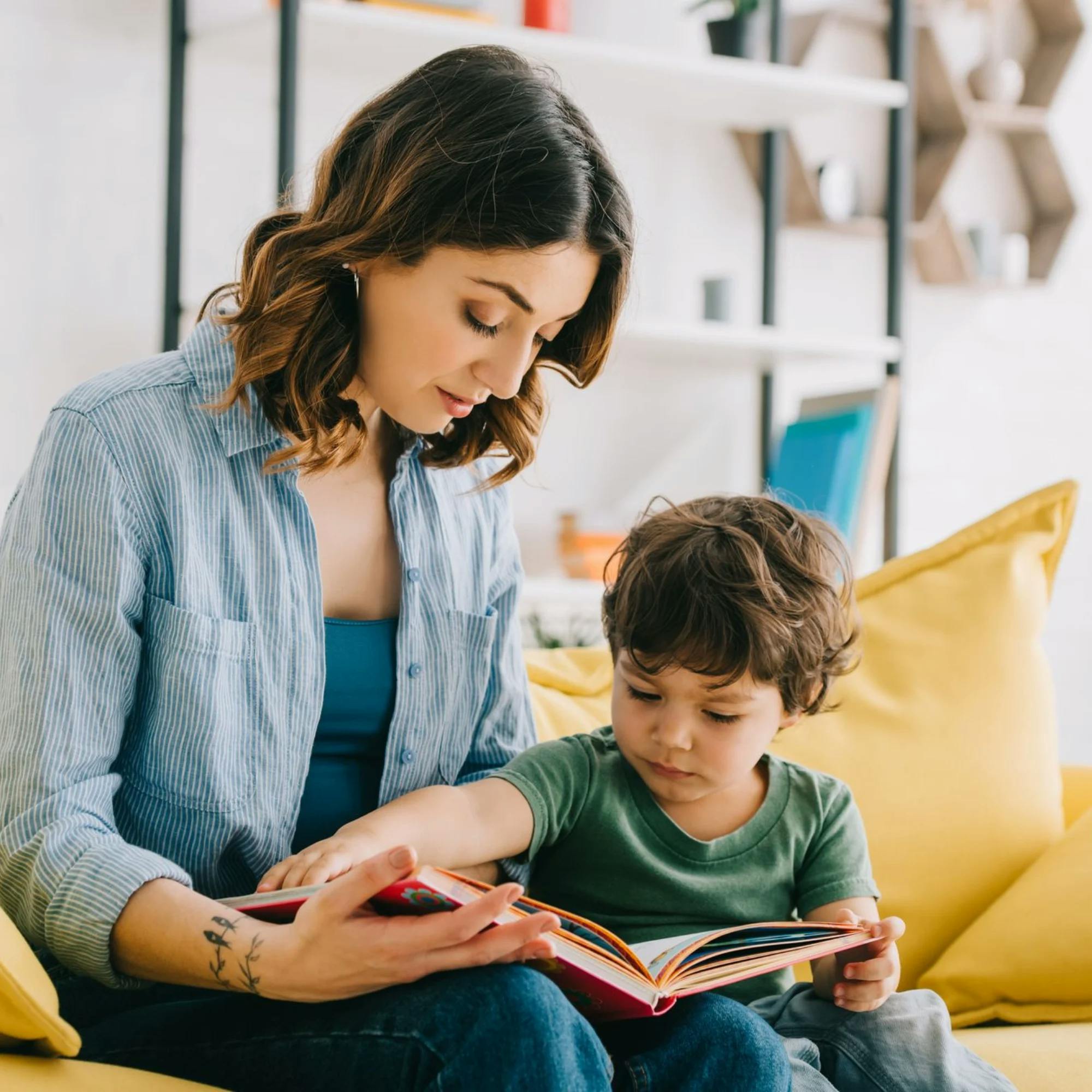
6 Toy food
Pretend food can be used in a variety of ways. You can use toy food, or even real food from your cupboard, to play grocery store. One person can pretend to go shopping while the other plays the cashier. You can practice social exchanges like asking, “Can I help you?,” saying “Thank you,” or pretending to pay for the items.
After shopping, don’t forget to pretend to cook dinner! Your child can practice repetitive phrases like “Here’s your food!” while serving each family member a plateful of their creations.
Or maybe it’s a good day for a picnic. You can have an indoor picnic with a fun set like this one. Or you can fill a basket or tote bag with food or snacks and have your very own real picnic together!

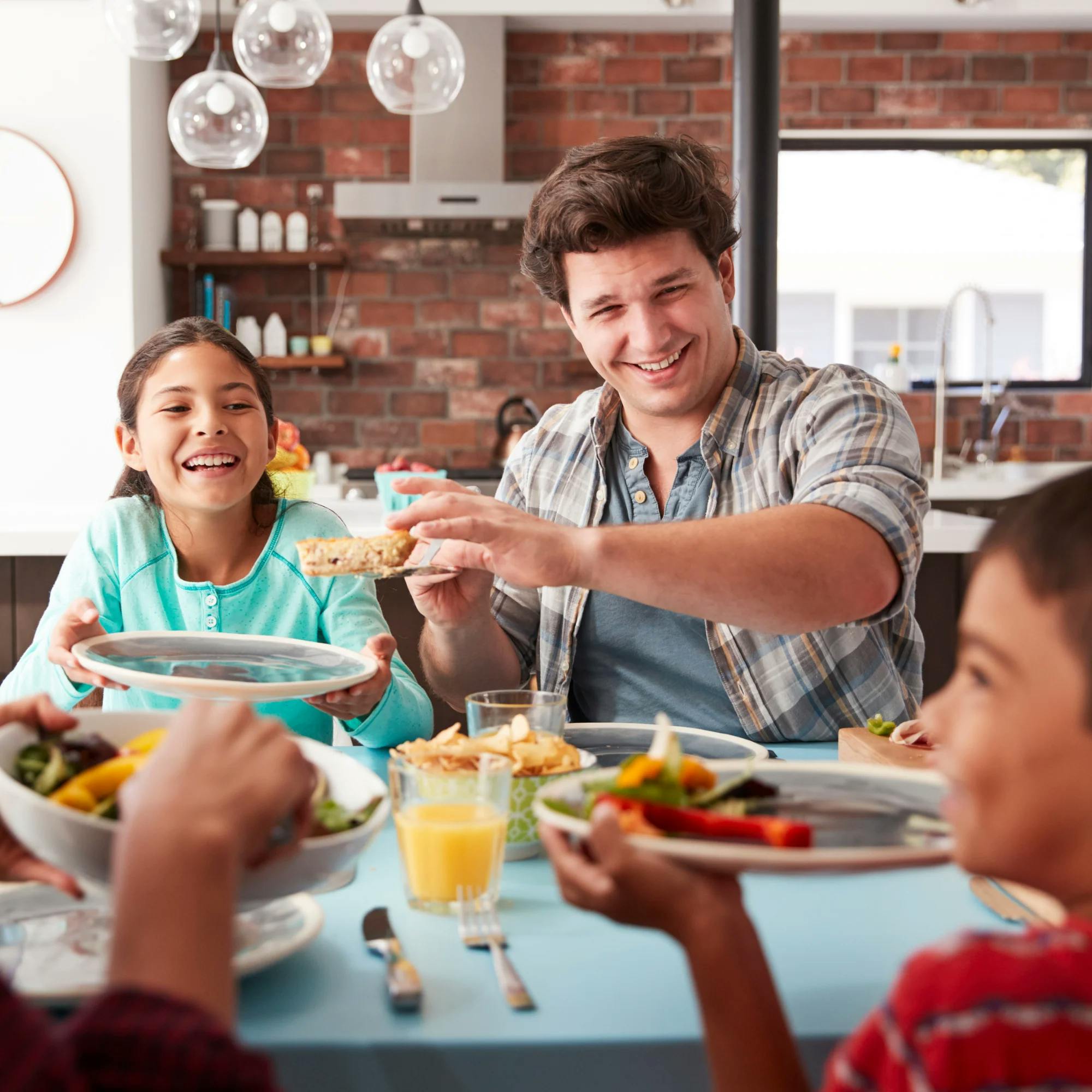
7 Books for 2-year-olds
Although not exactly a toy, we can’t put together a list of items for 2-year-olds without including books. Books are the perfect way to help your child grow their vocabulary skills while you enjoy bonding time together.
Pick a time of day to read at least one book to your child. Books that have repetitive language will help your child learn words and phrases quickly. You can also look for books with rhyming words, which help toddlers learn similarities between sounds and words.
Here are some favorite books to consider adding to your bookshelf (or checking out from your local library):
Touch and Feel - Animals
The Very Hungry Caterpillar
Brown Bear, Brown Bear, What Do You See?
Little Blue Truck
Goodnight Moon
Where Is Baby’s Belly Button?
Go, Dog, Go
Where’s Spot? (Bonus: Check out this quick video, where one of our speech therapists demonstrates a few reading tips using this book!)
No matter which toys you choose for your toddler, what matters is the time you spend together. Playing together is an important way for kids to bond with their parents and caregivers. It also allows for lots of opportunities to practice speech and language skills. Just follow your child’s lead. The world can be a lot of fun when you see it through your child’s eyes!
How Expressable Can Help
Concerned your child isn't reaching age-expected milestones? Looking for communication support from a professional? Expressable is a national online speech therapy practice serving children and adults. We treat all major areas of communication and feeding, offer flexible hours including evenings and weekends, and accept most major health insurance plans. We’re proud to have earned more than 3,000 5-star reviews from our clients (4.9/5 average).
Our therapy model is centered on parent and caregiver involvement. Research proves that empowering caregivers to participate in their loved one’s therapy leads to better outcomes. That’s why we combine live, 1-on-1 speech therapy with personalized education and home practice activities for faster progress.
Communication is more than words. It’s how we share how we feel and show who we are. We’re here to help you or your child do just that.
 Abby Barnes, M.S., CCC-SLP
Abby Barnes, M.S., CCC-SLP